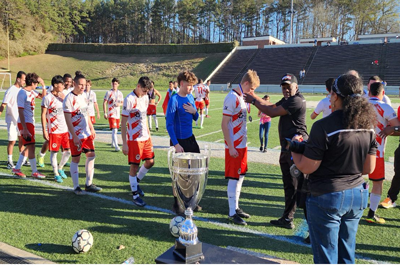Author / GoalMax Wearable Technology
Soccer, the world’s most popular sport, has seen remarkable advancements in recent years, including the integration of wearable technology. While these innovations have the potential to transform the game for all, they also highlight disparities between the wealthy and the less privileged. In this blog, we delve into the role of wearables in soccer and explore how they can help bridge the gap between the rich and the poor.
- Performance Optimization
Wearable technology in soccer offers players and coaches a wealth of data to enhance performance. The rich, well-funded teams can invest in state-of-the-art wearables, providing their athletes with detailed insights into their game. On the other hand, less privileged teams may have limited access to such technology. Bridging this gap requires making affordable wearables accessible to all levels of the game.
- Injury Prevention
Injury prevention is a critical aspect of player welfare. High-end wearables can track player loads and fatigue, helping to prevent injuries. By making cost-effective wearable solutions available to all, we can ensure that even young, aspiring soccer players have the tools to protect themselves from injuries.
- Player Development
Wearables provide invaluable insights into player development. They help identify strengths and weaknesses, allowing players to focus on areas that need improvement. Bridging the gap means making sure that talent development programs, regardless of financial constraints, can leverage wearable technology to nurture young talent effectively.
- Scouting and Recruitment
Wealthy clubs often have the resources to scout talent worldwide. Wearable technology can help identify promising players, even in underprivileged regions. Bridging the gap means empowering scouts and clubs of all sizes to access and utilize this technology to discover hidden gems.
- Fan Engagement
Soccer is not just about the players; it’s also about the fans. Wealthier clubs can invest in fan-centric wearables, enhancing the matchday experience. To bridge the gap, we need to ensure that even smaller clubs can provide engaging experiences for their supporters, promoting inclusivity in the sport.
- Grassroots Soccer
The heart of soccer lies in grassroots communities. Making wearable technology affordable and accessible to these communities can transform the development of young talent. Bridging the gap means investing in grassroots programs and ensuring they have access to the same technology as the elite.
- Global Reach
Soccer is a global sport, with fans and players in every corner of the world. Wearable technology can help connect these communities, allowing them to share experiences and insights. Bridging the gap means leveraging wearables to unite the global soccer community, regardless of financial disparities.
In conclusion, wearable technology in soccer has the potential to revolutionize the sport. However, its impact can be truly transformative when we focus on bridging the gap between the rich and the poor. By making these technologies accessible to all levels of the game, we can ensure that soccer remains the beautiful and inclusive sport loved by millions worldwide.

